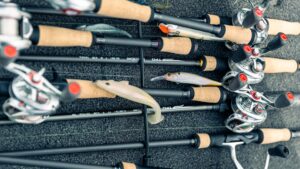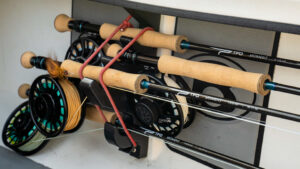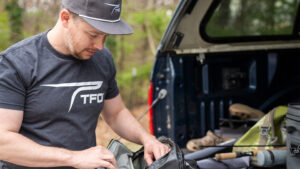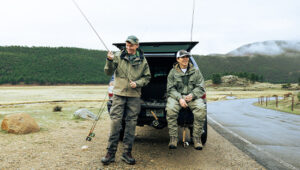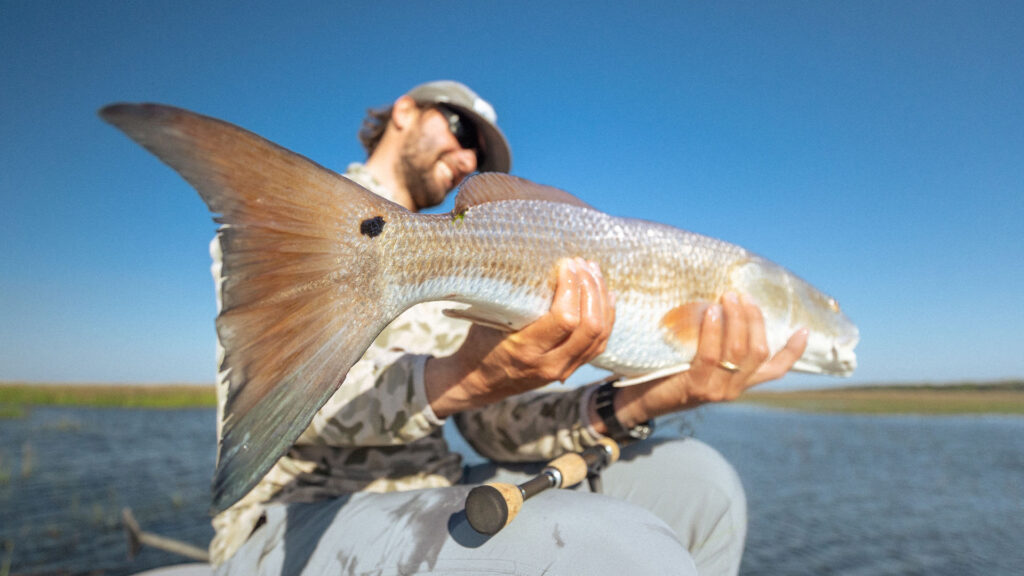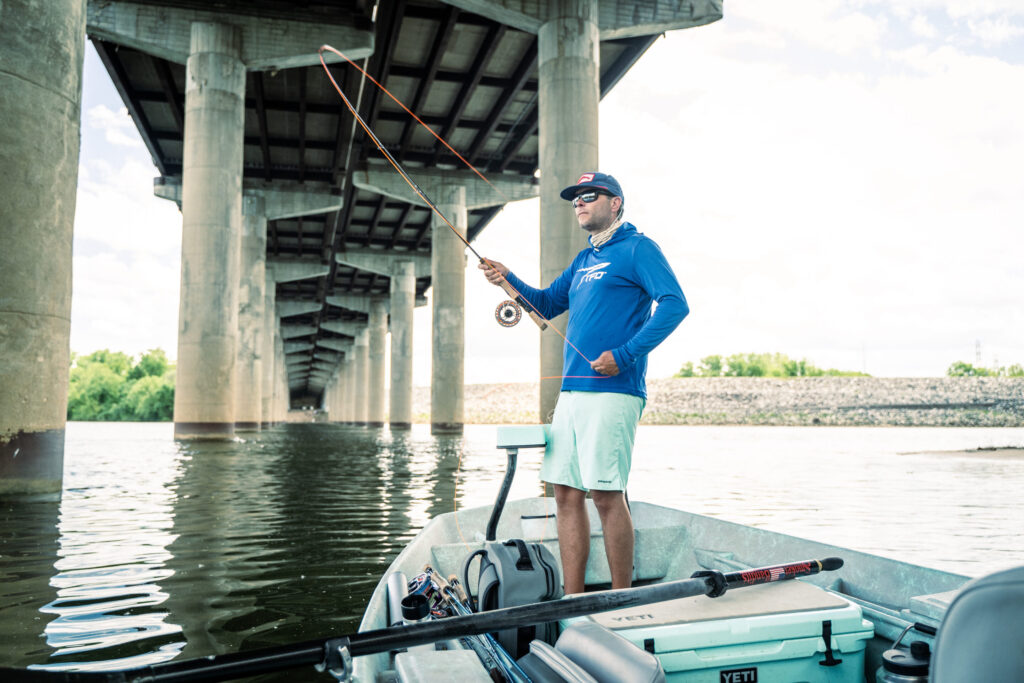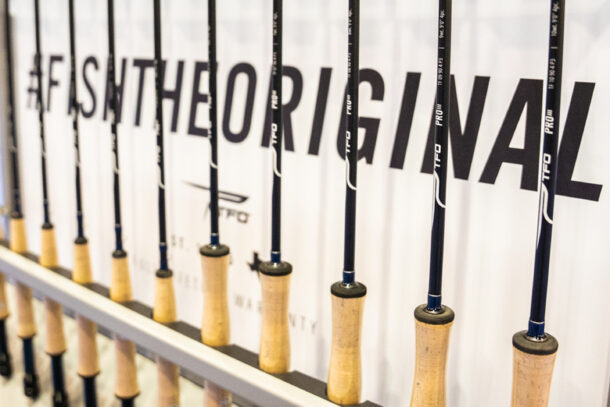Let’s face it: wind is often a part of a fisherman’s life, especially on the coast. At least here in North Carolina, we have more windy than dead wind days, so you must understand how to combat the wind to have the highest potential for catching fish. Learning how to deal with it will only make you a better angler and hopefully give you more confidence to succeed when it is indeed blowing. To that point, techniques such as lures, rods, and lines help in windy conditions, and we will go over those in detail.
Let me begin with a story. We run false albacore trips here in the fall, and as I said before, more often than not, there is some wind to deal with, varying from light wind to blowing 30 mph. On this particular day, it was blowing 20 to 25 mph; my client, for his life, could not get lured into the Albies while they were busting on the surface. It was one of those days that they would come up for 4 to 5 seconds, then down again, and then pop up 100 yards away again.
Albies are very much a game of cat and mouse. My client kept throwing overhead casts, and while that can be a great way to cast in most cases, generally speaking, it has a higher release, meaning that the lure is going higher in the air, and because of that, it has more time to catch the wind. So after about 4 to 5 failed attempts and some curse words at the wind, I recommended him to cast side arm and keep the cast lower to the water. Well, that proved the ticket to success because now his lure didn’t have as much air time to get caught by wind, and his casts began to produce bites.
Casting Technique & Boat Positioning
This brings me to my first point, which is technique. We generally all have a casting style that we are comfortable with, especially if you don’t fish every day. However, learning to cast lower to the water and decrease the air time will vastly improve your fishing in the wind in terms of accuracy and distance. When you have 5 seconds to get the lure in the right spot, and those fish can pop up anywhere from downwind to upwind to sidewind, that cast that doesn’t fall victim to the wind, like a sidearm cast, will do absolute wonders.
If you have the time to set the boat properly and the fish are staying up for long periods, by all means, make it easy on your angler and position the boat upwind of the fish and cast with the wind, but many times, that will not be the case.
While casting is crucial for every species of fish when fishing artificials in the wind, so is your lure choice. We fish for redfish a ton here in North Carolina, and the wind often dictates what I will be throwing on the end of my rods. While most lures can work on a light wind day, there are some that I have found to be more productive for redfish, especially when it’s blowing pretty good.
While I love to take my clients sight fishing for reds, when it’s really blowing, that can go to the wayside unless there are fish in very wind-protected areas. The first thing that comes to mind when looking at the wind forecast is “What is going to be the easiest and most productive thing to fish?” because more casts in the right spots mean a higher chance of catching fish. So, if the forecast calls for strong wind, I will pull out a handful of lures to help increase our chances.

Blog author Capt. Cameron “Cam” Pappas targeting the bank for reds. // Photo: Oliver Sutro
Lure Selection
The first that comes to mind is a spoon, generally in gold or bronze. This lure helps in a few different ways. One, it is very easy to cast, and you can launch them a country mile, so in the wind, they are fantastic. These lures have a lot of flash and vibration, which helps a ton when that wind has churned the water into chocolate milk.
The final benefit of these lures is that they often come with weed guards, which helps a ton when you switch from casting into the wind to casting with the wind, and all of a sudden, your spoon is going through the air with ease and traveling much greater distances. Until you calibrate, many times these casts might land in the spartina grass until you get calibrated.
If you are not a fan of spoons, a spinner bait is a great alternative, but it will not cast quite as well in strong wind as it’s not as aerodynamic. I do love spinner baits in the wind for a few reasons. The first would be that it’s generally a constant retrieve, so you can feel the bait even when the wind blows because there is constant tension in the line. Unlike a jerk bait that requires more twitching and pausing, with continuous tension on spinnerbaits, you are less likely to have a big wind bow in your line and miss the bite. Secondly, it also creates excellent flashes and vibrations, important qualities when a strong wind churns the water.
My third option would be a paddle tail. Like spinner baits, an angler can work a paddle tail on a constant retrieve, provide vibration in the water, and draw a bite when the water is unclear. The wind and the water depth will determine what size jig head I use, but the heavier you can get away with in the wind, the better for casting distance.
Your line is also essential to fishing but can be even more critical when battling the wind. Braid has become increasingly popular over the years, and for good reason. Here are a couple:
1) Line Holding Capacity: You can put more line on your reel because the braid is thinner in diameter than fluorocarbon. For example, 15-lb braid is much thinner than 15-lb fluorocarbon, so you can put on more line than with fluorocarbon.
2) Distance: Due to its thinner diameter, you can cast this line farther, which is a critical piece of the puzzle when fishing in the wind. I use reels of 3,000 sizes for most inshore saltwater fishing applications for species such as redfish and speckled trout. I spooled these with a 15-pound braid for a long time, but I have realized that 10-pound braid has more than enough strength and has the added benefit of casting distance. The thinner the diameter, the more aerodynamic, so a 10 lb braid will cast a little further than a 15 lb braid.
There are many braid options, but my braid of choice is Cortland Masterbraid. I find that I have fewer wind knots with this line as it casts very smoothly and effortlessly. Lastly, the only caveat to braid is that it is not very abrasion resistant, so a fluorocarbon leader (roughly 2 to 4 feet, depending on the lure and water clarity) will help significantly with abrasion resistance and be more stealthy when presenting lures to fish.

Photo: Cameron Pappas
Rod Selection
The last part of the equation is rod dimensions. Having the right power rod and the correct length will either help or hurt you in windy conditions.
A very stiff and short rod in the wind will cast poorly, especially with lighter inshore saltwater artificial lures. On the other hand, a longer rod with fast action can be your game-changer for casting distance, especially in the wind.
I generally prefer longer rods in general because, even in no-wind situations, you can get much more casting distance, which is helpful when going after spooky schools of redfish, so there are not many changes in my rod selection when it’s blowing versus when it’s very calm since most of my rods are already on the longer side. There is a fine line between rods being longer, though, because occasionally, rods can lose their backbone and be too flimsy, hindering your ability to fight fish properly. You want a rod with a sturdy backbone and a parabolic upper section. The rod should have a nice transition of power from the tip of the rod to the butt for the best casting.
So, all that said, my go-to rod setup for inshore saltwater fishing applications in windy conditions will be a 7’0 to 7’6 TFO Professional in the ML to M power category. These rods are fantastic in all scenarios, from casting far in the wind with artificial to casting to laid-up redfish 15’ off the bow. They are incredibly versatile and work in every condition you could throw at them.

Photo: Cameron Pappas
Final Thoughts
Hopefully, this information lets you go out and be better geared and prepared for whatever Mother Nature throws at you. As we all know, conditions change on a dime, and being ready to tackle the conditions and still have success is what makes it even more rewarding. Don’t let the wind be the reason you decide to stay on the couch!
Blog and select photos provided by TFO Pro Staffer Capt. Cameron Pappas of BlackBird Guide Services in Wilmington, North Carolina.
![]()
